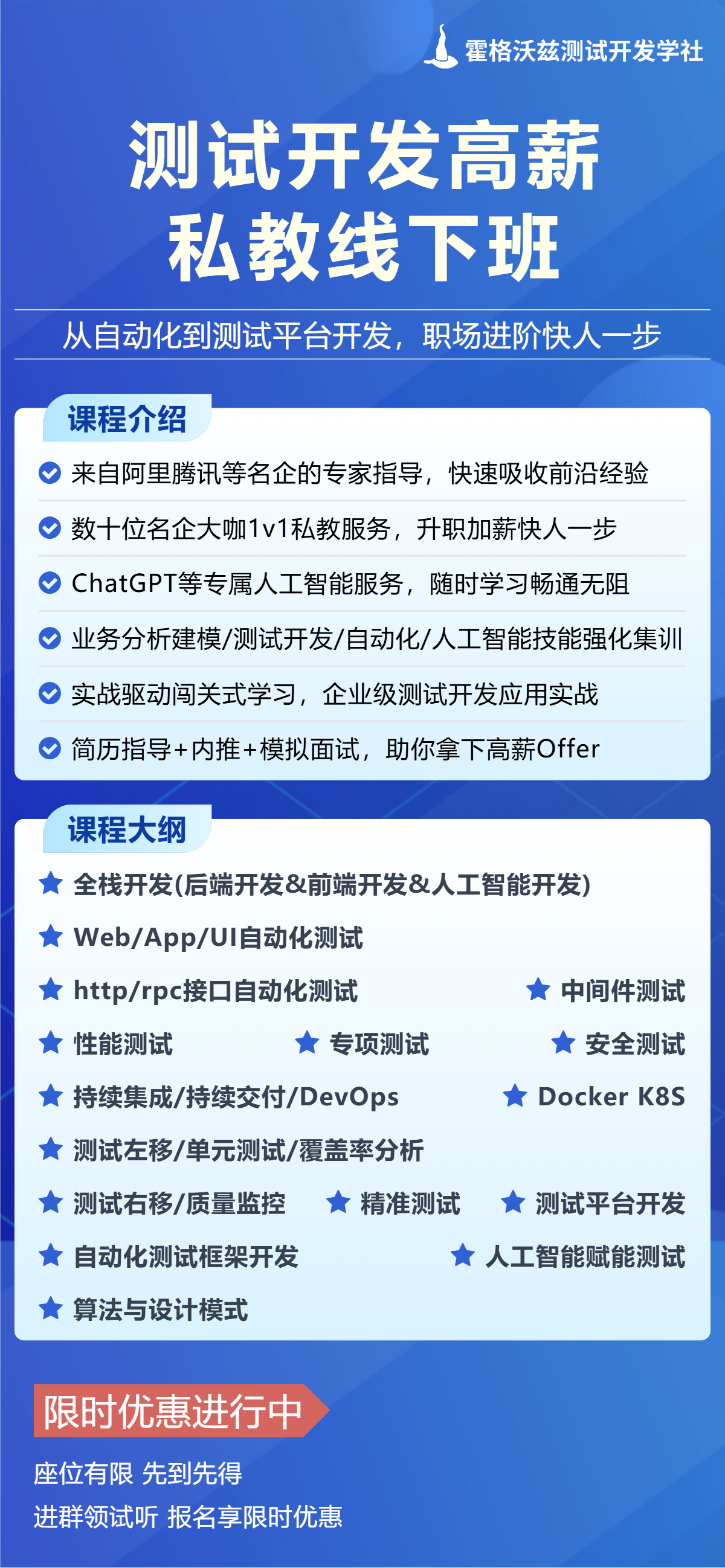Pytest 内置插件 Hook 体系:深入了解与实践
更多软件测试学习资料戳
Pytest 是 Python 生态系统中强大且灵活的测试框架,具有丰富的插件体系和灵活的 hook 机制。通过这些 hook,用户可以定制化测试过程,控制测试运行中的各个阶段。本文将详细介绍 Pytest 内置插件的 hook 体系,包括常用的 hook 函数、hook 的实现原理以及实际应用案例。
一、什么是 Pytest 的 hook 体系?
Pytest 中的 hook 是一种回调机制,允许在测试运行的各个阶段插入自定义逻辑。Pytest 使用 pytest.hookspec 装饰器定义了一系列 hook,可以覆盖 Pytest 的默认行为或实现特定的功能。通过 hook,用户可以动态修改测试执行、设置测试环境、管理测试输出等。
二、如何使用 Pytest 的 hook?
Pytest 的 hook 函数保存在 conftest.py 文件或自定义插件中。以下是使用 hook 的基本步骤:
定义 hook 函数:在
conftest.py中定义以pytest_为前缀的函数。注册 hook:Pytest 会自动加载
conftest.py文件中的 hook,无需手动注册。调用顺序:Pytest 会按照测试流程调用对应的 hook 函数。
三、常见的 Pytest hook 函数
Pytest 内置了大量 hook,用于覆盖从测试收集到结果输出的各个阶段。以下是一些常见的 hook:
1. 测试收集阶段 hook
pytest_collectstart(collector):开始收集测试时调用,可用于初始化或配置收集过程。
pytest_collectreport(report):每个收集项完成后调用,用于检查收集的结果。
2. 测试运行阶段 hook
pytest_runtest_setup(item):在每个测试用例运行前调用,用于进行资源初始化。
pytest_runtest_call(item):执行测试用例的核心代码。
pytest_runtest_teardown(item):测试用例运行完成后调用,用于资源清理。
3. 测试结果处理 hook
pytest_report_header(config):生成报告的头部内容,可用于添加自定义信息。
pytest_terminal_summary(terminalreporter, exitstatus):在测试完成后调用,用于在终端输出自定义总结。
四、深入理解 hook 的调用顺序
Pytest 的 hook 函数按照严格的顺序调用,顺序遵循测试生命周期。每个阶段的 hook 函数都有明确的调用时机:
收集阶段:首先收集测试项,调用
pytest_collectstart。执行阶段:按测试用例的顺序依次调用
pytest_runtest_setup、pytest_runtest_call和pytest_runtest_teardown。结果处理:测试执行结束后,生成报告和总结,调用
pytest_terminal_summary等。
五、Pytest hook 的实际应用案例
1. 自定义测试日志
可以使用 pytest_runtest_logreport hook 来记录详细的测试日志:
此函数会在每个测试用例运行完成后调用,帮助我们获取并处理测试结果。
2. 动态跳过测试用例
有时需要根据某些条件动态跳过特定的测试用例。可以通过 pytest_runtest_setup 实现:
上述代码会在没有数据库连接时跳过带有 skip_if_no_db 标记的测试用例。
3. 自定义测试报告头部
可以使用 pytest_report_header 添加自定义信息到测试报告头部:
此 hook 会在生成报告前调用,将返回值写入报告头部。
六、Pytest 插件与 hook 的扩展
在大型项目中,可以将多个 hook 集成到自定义插件中,通过在 pytest_plugins 中定义插件名称,或使用 pytest_addoption 添加命令行选项,以进一步扩展 Pytest 的功能。
例如,编写一个插件 myplugin.py:
在 conftest.py 中启用插件:
七、总结
Pytest 的 hook 体系为我们提供了丰富的定制化能力,可以灵活地控制测试执行过程并实现个性化的测试需求。通过熟练掌握 Pytest hook,我们可以更高效地管理和优化测试流程,从而提高代码质量和测试效率。











评论